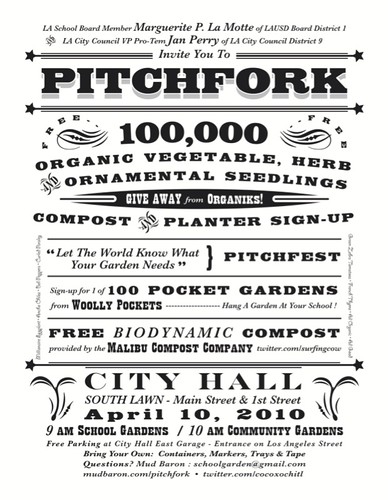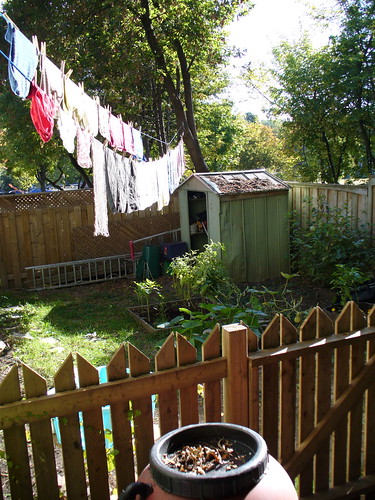
scarfing down a dessert of bananas
There's nothing as much fun for someone who likes to cook as an appreciative eater. The Little Pea is a loud, lip-smacking, spoon-waving, groaning and mmm'ing appreciative eater - I've never cooked for someone so enthusiastic about their three squares a day. She makes it easy to be adventurous in the kitchen.
I've really enjoyed making baby food for her, and thought I'd share a little of the fun with you all. First, a couple of books that we love:
Simply Natural Baby Food, by Cathe Olson
Feeding Baby Green, by Dr. Alan Greene (love love love Dr. Greene!)
The first book is a great little cookbook for babies and toddlers. We were pleased to realize that you can feed a little baby just about anything (natural), as long as you prepare it properly for her. This book taught us how to cook all sorts of veggies and grains to make them safe and appealing for babies who are just starting solids, and well into toddlerhood.
Dr. Greene's book is one of those big advice books written by a pediatrician, but he is very down-to-earth (and all about saving the earth), and we were inspired by his adventurous approach to feeding little ones.
Since babies can't have salt, and since we don't tend to like our vegetables smooshy, the little one isn't eating much of our table food yet. But boy, is she eating diversely. We found that it's fun, easy and cheap to steam up a big pot of vegetables, puree them (when she was tiny) or cube them (so that she can practice feeding herself) and then use ice cube trays to freeze them in individual portion sizes. That makes it really easy to give her a very well-rounded meal full of interesting foods, with very little work.
I have to say that making your own baby food is also far cheaper than buying it at the store, and you get a lot more variety too (not to mention the ability to serve everything organic). We found that depending on the particular ingredients, home-made baby food is anywhere from one-third to one-tenth of the price of store-bought. And of course there's the environmental benefit of less consumption, packaging, transport, production energy, etc.
My partner was particularly inspired by Dr. Greene's book to try to feed our little one something from all 21 plant families before she turned one. The ones in italics are plant families she hasn't tried yet:
1. Mushrooms
2. Amaranths - spinach, chard, beets, quinoa
3. Umbrellifers - carrot, fennel
4. Cruciferous vegetables - broccoli, cauliflower
5. Bromeliads
6. Composites - lettuce (swiped from the garden beds)
7. Bindweeds - sweet potato - the all-time favorite!
8. Gourds - butternut squash
9. Heath plants
10. Legumes - peas and all sorts of beans
11. Lilies - onion
12. Woody trees - banana
13. Sesames
14. True grasses - oats, brown rice
15. Rosy plants - apple, peach, pear, plum
16. Citrus - lemon
17. Nightshades - peppers
18. Grapes
19. Laurels - avocado (best lunch on-the-go)
20. Myrtles
21. Loosestrifes
Hm, seven plant families to go. Perhaps we'll be having mushrooms, pineapple and tahini for lunch tomorrow. Yum!





